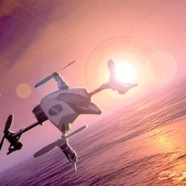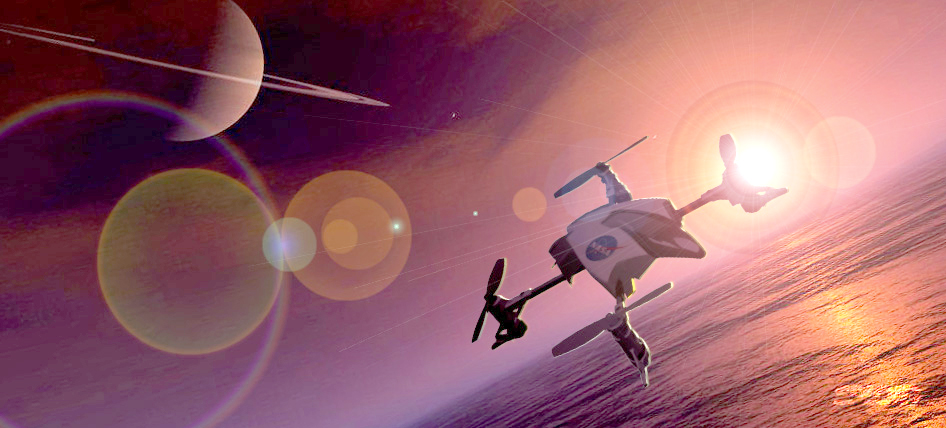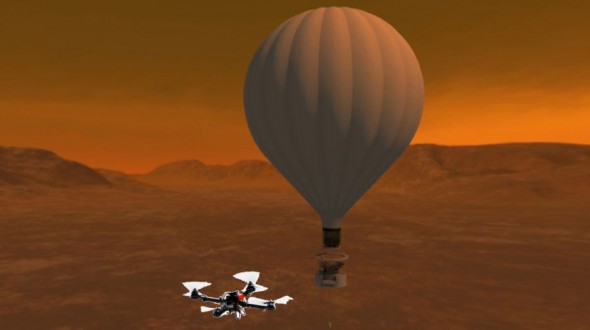Nasa Wants to send Quadcopter to Titan
NASA wants to send a quadcopter to Saturn’s giant moon Titan
Saturn’s largest moon Titan fascinates the scientists at NASA due to its dense atmosphere and the presence of stable bodies of surface liquid alongside ice and rock. The nitrogen rich atmosphere experiences wind and rain, meaning the mix has produced a moon with similar features to Earth’s own surface, complete with rivers, lakes and seas (of liquid methane or ethane), mountains, and dunes.
Such an interesting place deserves to be explored, but visiting Titan for an extended period of time hasn’t been feasible due to a lack of supporting technology. NASA’s ideal vehicle for exploration there would be a helicopter, able to move quickly from place-to-place taking photos and collecting samples. But such a craft would be too expensive to develop and deploy, we haven’t had the tech to make it work autonomously, and even then you wouldn’t be able to support it. Other missions including a balloon, plane, and boat have also been proposed and later shelved.
However, in recent years there have been major advances in autonomous navigation coupled with the miniaturization of technology including sensors and computer systems. What that means is the idea of sending a helicopter to Titan has morphed into sending something that quite a few of us are buying for fun right now: a quadcopter or similar tiny flying drone.
NASA is researching a mission that would see the equivalent of a quadcopter supported by a balloon sent to Titan. The balloon would drop into Titan’s atmosphere without needing to land and would act as a base station. The quadcopter would launch from the balloon to visit locations, take pictures, and collect samples. It would then return to the balloon to recharge its batteries and have the data and samples it has collected analyzed by NASA back on Earth. The length of the mission would only be limited by how long the balloon could keep providing power to the quadcopter.
The combination of a balloon and quadcopter make such a mission feasible for several reasons. The craft and balloon are both lightweight, the autonomous systems used to navigate are becoming mature here on Earth, the quadcopter is quite hard wearing, and the power it requires is minimal.
The potential for discovery and education through a visit to Titan’s surface make such a mission highly desirable and very exciting for everyone involved. For now NASA is just at the planning stage, but if you’ve seen how complex the Curiosity landing was on Mars, this mission by comparison should be a walk in the park if it gets funded.



